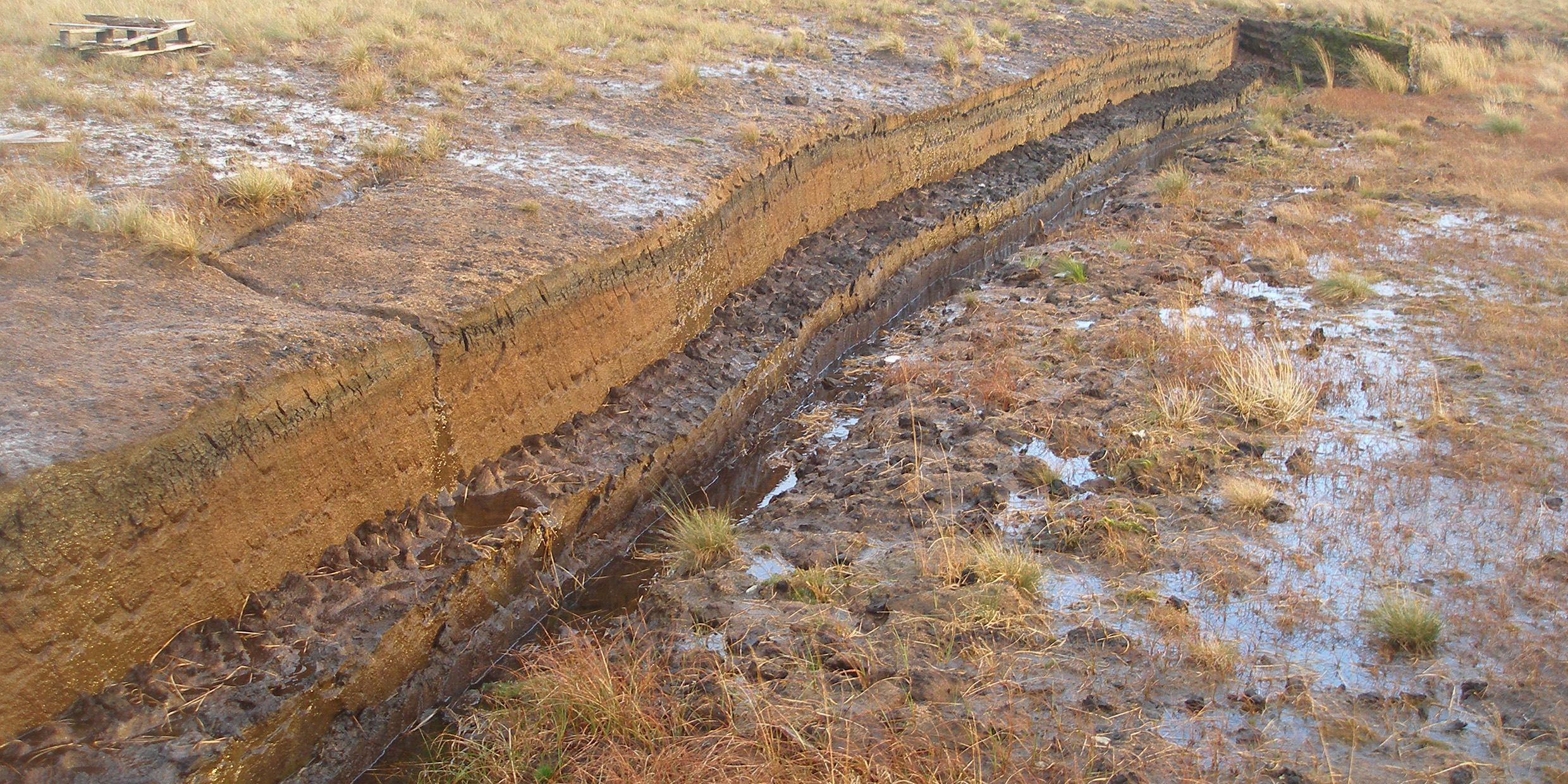The lands of northern Europe are peppered with muddy bogs full of decaying life. On the surface, these wetlands seem like nothing more than pools of moss and disease, but underneath lies a real treasure: bog bodies. These bodies have been exceptionally well preserved by this unlikely environment, even down to their last meal.

A look at the layers of a peat bog. A body can be trapped and preserved for thousands of years.
So how does this phenomenon occur? The secret to their remarkable preservation is a specific moss called sphagnum. The moss itself creates an insulated dome that prevents most oxygen from filtering through to the land beneath it. Not only that, it acts as a sponge that absorbs calcium and magnesium from its surroundings, resulting in a more acidic environment that is toxic to natural decomposers like bacteria and fungi. Even in death, the moss acts to preserve the bodies by releasing a chemical called Sphagnan that both eliminates bacteria and gives these bog bodies their signature leathery brown/black skin.
These bodies tell tales that bring up a lot of questions for the archaeologists that discover them. Primarily, most of the bodies have telltale marks of violent death, whether through hanging, stabbings, or blunt force trauma. On occasion, the bodies even show multiple fatal wounds, baffling researchers further.

The mummified head of the aforementioned Lindow Man. A notch can be seen where a blunt object fractured his skull.
One of the more significant bodies in this puzzle is the Lindow Man. Discovered by peat cutters in 1984, this corpse was found to be a young man who lived around the 1st century A.D. Researchers identified three different causes of death: he was hit in the head, garroted, then had his throat slit. The discovery of water in his lungs also indicates this wasn’t simply somewhere his body was dumped. He was intentionally killed far out into the bog, though the exact reason for this is unknown.
Some have speculated that these bodies may have been a result of some kind of violent ritual based on cultural beliefs surrounding the bogs. While we may not see bogs are particularly useful today, in the Iron Age, bogs were a vital part of their society. Some professionals theorize that these societies may have believed that the bogs had some connection to the underworld or a higher power, and that ritual death would often occur in bogs as a result. The details of Lindow Man’s last meal (a charred griddle cake) lend credence to this theory as well. An old British ritual has people pull griddlecakes from a bag, with the one that pulled the charred cake put to death.
As Europe closes down its bogs due to peat harvesting’s adverse effect on climate change, there will certainly be fewer bog bodies to be discovered and investigated. The mystery of the bog bodies might just remain a mystery for a little longer.
Links of Interest
Video Documentary of North American Bog Bodies
References
Magazine, Smithsonian. “Europe’s Famed Bog Bodies Are Starting to Reveal Their Secrets.” Smithsonian.com, Smithsonian Institution, 1 May 2017, www.smithsonianmag.com/science-nature/europe-bog-bodies-reveal-secrets-180962770/.
Mancini, Mark. “Peat Bogs Are Freakishly Good at Preserving Human Remains.” HowStuffWorks Science, HowStuffWorks, 24 Aug. 2022, science.howstuffworks.com/environmental/earth/archaeology/peat-bogs-are-freakishly-good-at-preserving-human-remains.htm.
“The Mystery of the Human Sacrifices Buried in Europe’s Bogs.” BBC Future, BBC, www.bbc.com/future/article/20220907-the-mystery-of-the-human-sacrifices-buried-in-europes-bogs.

How does ethnoarchaeology help us here to interpret the archaeological study of ‘bog bodies’ as a form of ritualized murder?